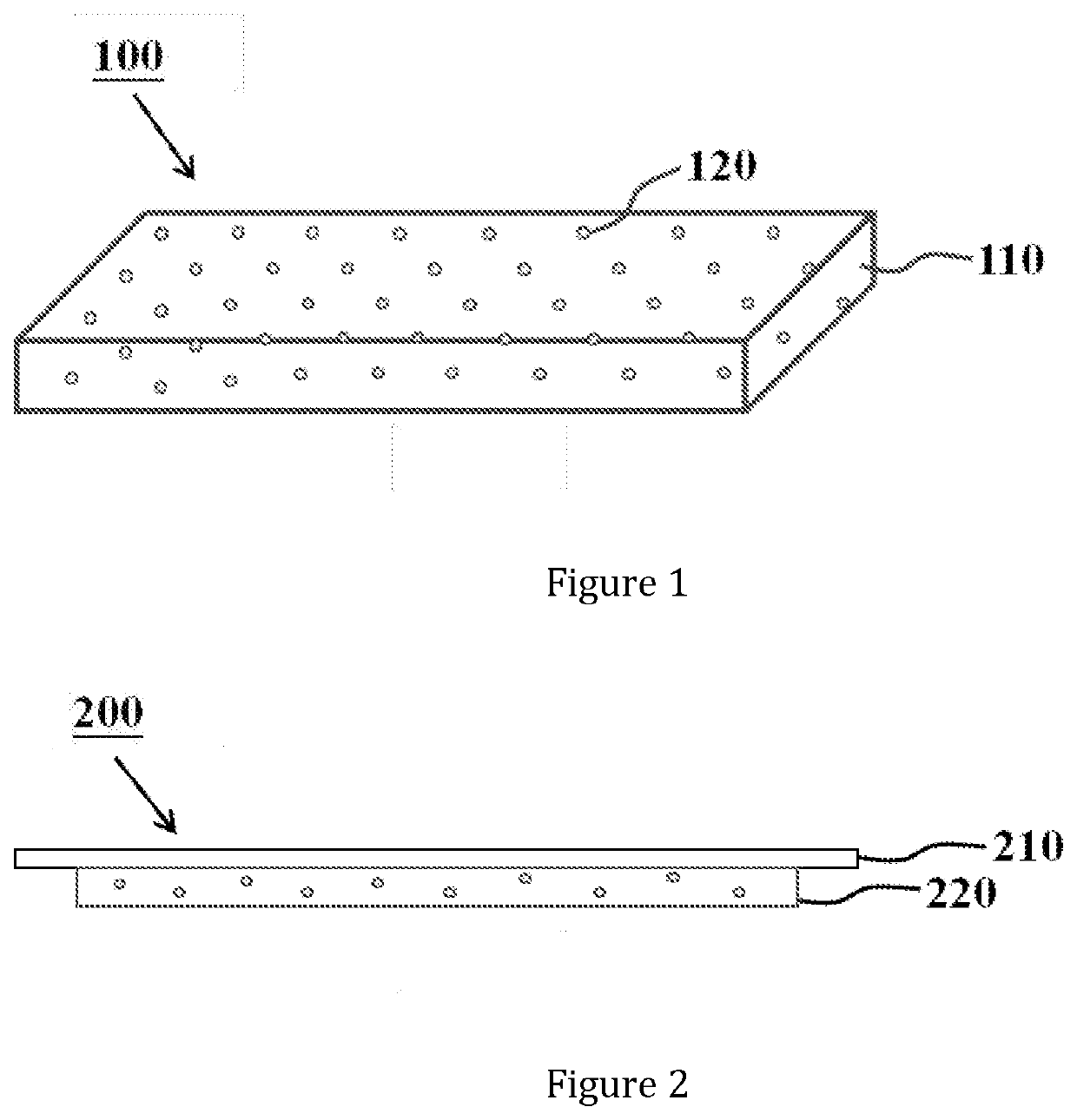Composite Material
a technology of composite materials and absorbent pads, applied in the field of composite materials, can solve the problems of foul odor, secondary harm and pain to the wound, and the inability to keep the wound moist,
- Summary
- Abstract
- Description
- Claims
- Application Information
AI Technical Summary
Benefits of technology
Problems solved by technology
Method used
Image
Examples
example 1
Preparation of Hydrophilic Polymer
[0065]3 g of acrylamide (a hydrophilic monomer), 7 g of 2-acrylamido-2-methylpropanesulfonic acid (a hydrophilic monomer), 2 g of silicon oxide, N,N′-methylenebisacrylamide (the added amount was 1% by weight based on the total weight of the hydrophilic polymer) (a crosslinking agent) were mixed with water to 100 g, and stirred well.
[0066]After oxygen was removed from the above solution, an initiator Irgacure 2959 (the added amount was 2% by weight based on the total weight of the hydrophilic polymer) was added to the solution and stirred well. The solution was transferred to a reaction mold, and irradiated under the ultraviolet light to cause the solution in the reaction mold to start undergoing cross-linking polymerization, and the liquid oligomers in the solution gradually formed a hydrophilic polymer having a water insoluble solid three-dimensional network structure as a hydrophilic substrate.
example 2
Preparation of Composite Material
[0067]10 grams of a 10% collagen solution was added, which was a wound healing effective factor, in the above solid hydrophilic polymer. After the solid hydrophilic polymer completely adsorbed the collagen solution, a composite material could thus be obtained.
[0068]As shown in FIG. 1, it is a schematic diagram showing the structure of the composite material 100 of the present invention, the composite material 100 comprised a hydrophilic substrate 110 and a wound healing effective factor 120. The hydrophilic substrate 110 was a reaction product of a hydrophilic polymer, which was a solid material having a three-dimensional network structure, wherein the hydrophilic polymer comprised a hydrophilic monomer, a crosslinking agent and an inorganic silicon-oxygen compound. The wound healing effective factor 120 was distributed in the three-dimensional network structure of the hydrophilic substrate 110; when the composite material 100 was used for treating a...
example 3
Efficacy Test of Composite Materials
[0069]According to the above preparation method of the composite material of the present invention, only the added amount of the silicon oxide portion in the hydrophilic polymer was adjusted or silicon oxide was replaced with other components, that was, the components and the added amount of the original 3 g of acrylamide, 7 g of 2-acrylamido-2-methylpropane sulfonic acid and N,N′-methylenebisacrylamide (the added amount was 1% based on the total weight of the hydrophilic polymer) remained the same to prepare samples of four different composite materials. The differences in the preparation method of each sample were as follows: Sample 1: the added amount of silicon oxide was 2 g; sample 2: the added amount of silicon oxide was 6 g; sample 3: silicon oxide was replaced with magnesium aluminum silicate, and the added amount was 2 g; and sample 4: silicon oxide was replaced with magnesium aluminum silicate, and the added amount was 6 g.
[0070]The abov...
PUM
| Property | Measurement | Unit |
|---|---|---|
| Percent by mass | aaaaa | aaaaa |
| Percent by mass | aaaaa | aaaaa |
| Percent by mass | aaaaa | aaaaa |
Abstract
Description
Claims
Application Information
 Login to View More
Login to View More - R&D
- Intellectual Property
- Life Sciences
- Materials
- Tech Scout
- Unparalleled Data Quality
- Higher Quality Content
- 60% Fewer Hallucinations
Browse by: Latest US Patents, China's latest patents, Technical Efficacy Thesaurus, Application Domain, Technology Topic, Popular Technical Reports.
© 2025 PatSnap. All rights reserved.Legal|Privacy policy|Modern Slavery Act Transparency Statement|Sitemap|About US| Contact US: help@patsnap.com

